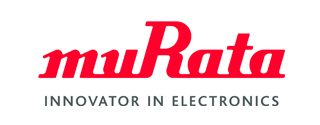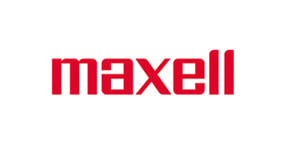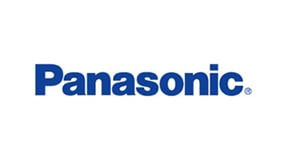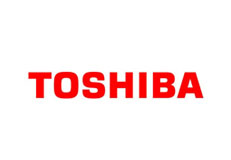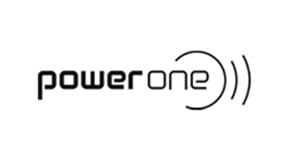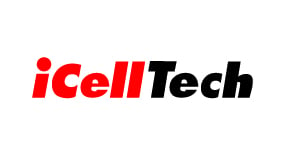Primary battery options and a look at lithium batteries
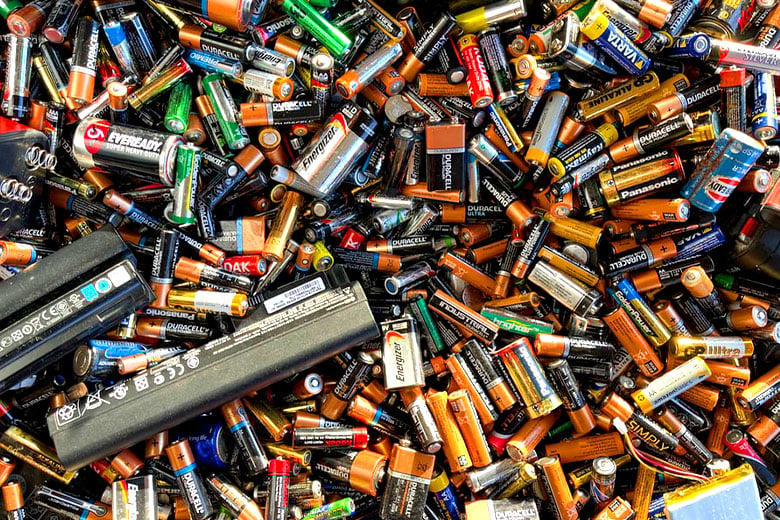
A LOOK AT LITHIUM BATTERIES
In a prior article, Battery categories and chemistries, we discussed the two battery categories, primary batteries and secondary batteries, with a brief summary of the common batteries in each group. We focused on alkaline batteries in our post, Role of primary batteries, and presented the broad family of lithium-metal cells, which together with alkalines, dominate primary batteries in both popularity and usage.
n this article we will take a closer look at primary battery types and delve just a bit more in some of the more recognized lithium chemistries available. Excluded from this post are three primary battery types that serve niche applications—zinc-air batteries mainly used to power hearing-assisted devices, silver-oxide batteries mainly used for watches, and zinc-carbon batteries which were superseded by alkalines in the 1980s but are still available for specialized needs. Available links to discussions on these batteries can be found at the end of this post.
Alkaline batteries
Alkaline batteries have been with us since the 1950s, invented in 1949 by Lewis Urry, a chemical engineer at the Eveready Battery Company. It served as the next step in off-the-shelf consumer batteries, gradually replacing the cheaper 1.5-volt zinc-carbon-battery that powered most consumer devices at its peak. Alkaline batteries deliver more energy at higher loads than their zinc-carbon predecessor and are considerably less susceptible to electrolyte leaks from spent batteries. Leaks are caused by the production of hydrogen gas all primary batteries produce as they discharge. In the absence of adequate venting, pressure builds that ruptures the battery seal creating a corrosive crystalline formation that spreads even into the device causing damage.
Compared to newer technologies, alkaline batteries deliver nearly 40 percent more energy than the typical lithium-io rechargeable battery but are not as strong on loading. Alkaline batteries are more suitable for low drain applications
Lithium batteries
Lithium batteries describe a family of varying cell chemistries. Some types, lithium-iron, are primary single-use batteries; others, are secondary rechargeable types known as lithium-ion. In common with each other, they use lithium for the anode (the negative electrode). Their principle difference lies in the material used for the cathode (the positive electrode), the most common of which is manganese, but could also consist of carbon, sulfur, polymer, or other material. In this section, we cover four of the more popular primary lithium-iron batteries.
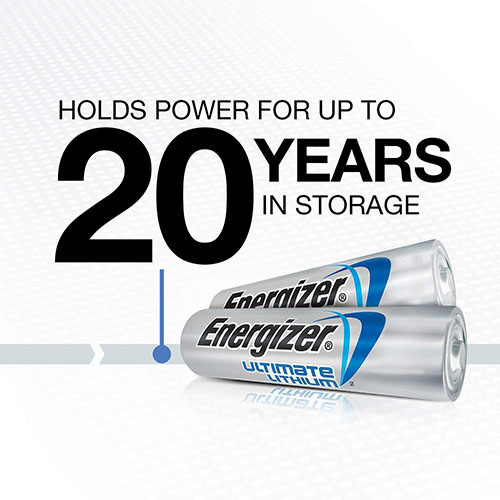
Lithium-iron disulfide batteries (Li-FeS2)
Matching the 1.5-voltage of alkaline batteries, the lithium-iron disulfide is the newest addition to the primary lithium sub-family and can meet and exceed the needs of any application requiring 1.5-volt AAA or AA alkaline batteries. In most cases, it will outperform the alkaline cell in nearly every way. A lithium AA battery can outlasts an alkaline battery by up to six times when used in a high drain application such as a digital camera. It boasts a higher operating voltage, improved stability, and a lower resistance than standard alkaline cells. Additional advantages of the lithium-iron disulfide battery include low temperature performance and improved leak resistance, and a shelf life of 15 years due to its low self-discharge rate.
While on might be tempted to replace their spent alkaline batteries with this chemistry, as expected with all battery types, there are a few drawbacks. First, they do cost a bit more but still well-affordable. Second, their transport is restricted. Bulk shipments are prohibited by both the Department of Transportation (DOT) and the Federal Aviation Administration (FAA). With few exceptions, most airlines restrict quantities to two grams per passenger carryon. Li-FeS2 batteries contain about 0.98 grams of lithium per cell, which allows for just two spare batteries. These regulations reflect the dangers associated with mishandling of lithium batteries in general. Leaks and explosions can, under certain conditions, result from mismatching a depleted cell, adding a foreign cell, or even inserting it backwards in the battery bay.
Lithium-thionyl chloride batteries (LiSOCI2 or LTC)
Often found in horizontal drilling (i.e., fracking) applications because of its ability to withstand high vibration and heat generated, the lithium-thionyl chloride battery is among the toughest and most powerful lithium-metal batteries available. LTC batteries have a nominal voltage of 3.6 volts per cell, but like alkalines, their moderately high resistance limits their application to moderate discharge loads; however, the LTCs exceed 500Wh/kg (watt hours per kilogram) in specific energy rating, which means it offers twice the capacity of nearly any rechargeable Li-ion. The runtime of lithium-thionyl chloride batteries are additionally determined by other factors, including load pattern and thermal condition.
Due to safety concerns, LTC batteries are neither found in consumer devices, nor available as a civilian general-purpose battery. Their use is relegated primarily to industrial equipment, medical and sensor applications, and military devices such as mines and fuses. The potent chemistry of LTC batteries calls for handling by trained professionals.
Lithium-manganese dioxide batteries (LiMnO2 or Li-M)
Where LTCs fail to address consumer needs, the similar lithium-manganese dioxide battery is available for civilian use. In fact, it is the most commonly used primary lithium, dominating nearly 80% of the primary lithium battery market and produced by all major battery manufacturers. Among its advantages are its affordability, long service life, low-drain, and ability to also handle high pulse currents. The Li-M cell runs at 3–3.3V and a specific energy of well over half its LTC counterpart, or 280Wh/kg. It is typically used in sensors, medical devices, photography equipment, as well as watches. The prefix “C” in the common CR2032 battery typically found on computer motherboards and watches, is a designation used to indicate its lithium chemistry. Usually, this coin cell battery is of the lithium-manganese dioxide chemistry.
As with all lithium batteries, extra care must be exercised to protect them from short circuiting, electrical or physical abuse, and heat. Additional regulations apply to their transportation and disposal.
Lithium-sulfur dioxide batteries (LiSo2)
Lithium sulfur dioxide batteries are primarily used in defense applications that require large quantities of this battery, and medical devices such as cardiac defibrillators. It is a cylindrical shaped cell that delivers 2.8 volts in A, C, and D battery formats, and features a 5–10-year expected shelf life when properly stored at ambient room temperature. LiSo2 batteries are capable of delivering repeated power bursts, and like their siblings, boast a high energy density of 330Wh/kg. While lithium sulfur dioxide batteries are cost-effective to manufacture, they are increasingly being supplanted by the superior Li-M cell. The battery gets its name from its cathode which consists of porous carbon filled with sulfur dioxide.
A summary of the five, commonly used, primary batteries:
|
Chemisty |
Alkaline |
Lithium-iron disulfide |
Lithium-thionyl chloride |
Lithium-manganese dioxide |
Lithium-sulfur dioxide |
|
Chemical short name |
N/A |
LiFeS2 |
LiSOCI2 or LTC |
LiMnO2 or Li-M |
LiSo2 |
|
Specific energy |
200Wh/kg |
300Wh/kg |
500Wh/kg |
280Wh/kg |
330Wh/kg |
|
Voltage |
1.5V |
1.5V |
3.6–3.9V |
3–3.3V |
2.8V |
|
Power |
Low |
Moderate |
Excellent |
Moderate |
Moderate |
|
Passivation* |
N/A |
Moderate |
Moderate |
Moderate |
Moderate |
|
Safety |
Good |
Good |
Precaution |
Good |
Precaution |
|
Pricing |
Low |
Economical |
Industrial |
Economical |
Industrial |
|
Shelf life |
10 years |
15 years |
10–20 years |
10–20 years |
5–10 years |
|
Operating temperature |
0°C to 60°C |
0°C to 60°C |
-55°C to 85°C, higher for short duration |
-30°C to 60°C |
-54°C to 71°C |
|
Typical application |
Consumer devices. |
Replaces alkaline where higher power and extended runtime needed. |
Fracking. Not for consumer use. |
Meter sensing, |
Defense. Gradual migration to |
|
Formats |
Various cylindrical A, AA, AAA, AAAA, C, D, 9V; button and coin cells. |
Mainly cylindrical AA and AAA. |
Various cylindrical, cuboid, wafer. |
Various cylindrical A, AA, C, D; button and coin cells; cuboid. |
Primarily cylindrical A, C, and D. |
*Passivation is a very thin, resistant layer that forms on the lithium anode surface that serves to inhibit lithium degradation and minimize the self-discharge rate of lithium batteries.
Please reference these posts for popular, niche-specific, primary batteries
Zinc-air batteries
link
Silver-oxide batteries
link
About Us:
Microbattery.com is the leading provider when it comes to Hearing Aid Batteries, Watch Batteries, Lithium Coin Cells, Lithium Batteries, Alkaline Batteries, and Rechargeable Batteries across North & South America. We have the capability to meet the needs of all sizes of consumers, dealers, distributors and importers. For over 25 years, we have been striving to ensure high customer satisfaction and provide the best quality product possible. Ever since our online store was launched 15 years ago, we have been constantly improving & optimizing our site to provide the most enjoyable and convenient shopping experience for our valued customers.
Our online store has one of the largest selections of various batteries and battery products for all types of electronic applications on the web. Our website is very easy to navigate to help ensure customers can find exactly what they need. All of our products are conveniently organized by category. They can be easily filtered by the category drop down located at the top of every page on our website. Alternatively customers can use the Battery Finder™ located on our homepage, to quickly and simply identify the exact batteries they need. If you require any assistance in determining what products are right for you please do not hesitate to give us a call at (305)-371-9200.
At Microbattery.com, you will find one of the largest selections of batteries on the web. We have millions of cells of common batteries like CR2025, CR2032, LR44, LR41, AA, and AAA in stock at all times. We also carry a wide variety of less common batteries such as CR2477, CR2016, Rechargeable Batteries, Radio Batteries, Telephone Batteries, and Pet Batteries. Regardless of your battery needs, we have got you covered. If you require a battery that we currently do not carry, please feel free to give us a call at (305)-371-9200 to place a special order (some restrictions apply).
Our customer base currently includes tens of thousands of satisfied consumers, various private companies, (local, state, federal, international) government agencies, military, institutions, wholesalers, and chain stores. Without hassle, we will ship your products worldwide, already having done so for over eighty-five countries.
Thank you for taking the time to read this article: If you are interested in purchasing products from Microbattery.com use coupon code: Microfive : To save 5% on your entire online order!

